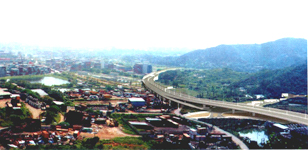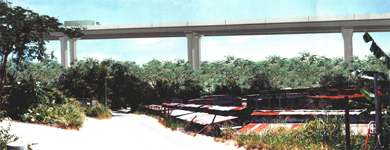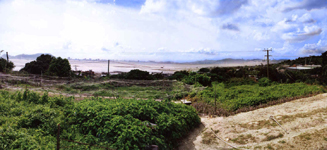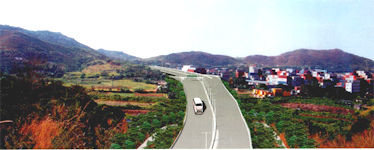







Agreement No. CE 109/98
Deep Bay Link
Investigation and Preliminary Design
Environmental Impact Assessment Report
CONTENTS
VOLUME 1 OF 3 (TEXT)
1 INTRODUCTION1.1 Background
1.2 Description of Project
1.3 Changes in the Project Scope
1.4 Objective of the EIA Study
1.5 Approach of Assessment
1.6 The Scope
1.7 Considerations on Alignment Options
1.8 Alignment Considerations in this Project
1.9 Considerations on Cumulative Effect from Other Major Projects in the Vicinity
1.10 Scenario Without Deep Bay Link2 AIR QUALITY IMPACT2.1 Introduction
2.2 Legislation, Policies, Plans, Standards and Criteria
2.3 Description of Environment
2.4 Air Quality Sensitive Receivers and Assessment Points
2.5 Assessment Methodology
2.6 Identification, Prediction and Evaluation of Potential Impacts
2.7 Mitigation of Adverse Impacts2.8 Environmental Monitoring and Audit3 NOISE IMPACT3.1 Legislation, Policies, Plans, Standards and Criteria
3.2 Description of Environment
3.3 Assessment Methodology
3.4 Identification, Prediction and Evaluation of Potential Impacts
3.5 Mitigation of Adverse Impacts
3.6 Definition and Evaluation of Residual Impacts
3.7 Environmental Monitoring and Audit4 WATER QUALITY IMPACT4.1 Legislation, Polices, Plans, Standards and Criteria
4.2 Description of Environment
4.3 Assessment Methodology
4.4 Identification, Prediction and Evaluation of Potential Impacts
4.5 Mitigation of Adverse Impacts
4.6 Definition and Evaluation of Residual Impacts4.7 Environmental Monitoring and Audit5 WASTE MANAGEMENT5.1 Legislation, Polices, Plans, Standards and Criteria
5.2 Description of Environment
5.3 Assessment Methodology
5.4 Identification, Prediction and Evaluation of Potential Impacts
5.5 Proposed Mitigation Measures
5.6 Environmental Monitoring and Audit Requirements
5.7 Conclusion 6 LAND CONTAMINATION IMPACT6.1 Legislation, Polices, Plans, Standards and Criteria
6.2 Description of Environment
6.3 Assessment Methodology
6.4 Identification, Prediction and Evaluation of Potential Impacts
6.5 Mitigation of Adverse Impacts
6.6 Conclusion and Further Investigation 7 ECOLOGICAL IMPACT7.1 Legislation, Polices, Plans, Standards and Criteria
7.2 Methodology
7.3 Description of Baseline Conditions
7.4 Identification, Prediction and Evaluation of Potential Impacts
7.5 Mitigation of Adverse Impacts
7.6 Definition and Evaluation of Residual Impacts7.7 Environmental Monitoring and Audit
7.8 References8 FISHERIES IMPACT8.1 Legislation, Polices, Plans, Standards and Criteria
8.2 Description of Environment
8.3 Identification, Prediction and Evaluation of Potential Impacts
8.4 Cumulative Impacts
8.5 Mitigation of Adverse Impacts
8.6 Definition and Evaluation of Residual Impacts
8.7 References 9 CULTURAL HERITAGE IMPACT9.1 Legislation, Polices, Plans, Standards and Criteria
9.2 Description of Environment
9.3 Assessment Methodology
9.4 Identification, Prediction and Evaluation of Potential Impacts
9.5 Mitigation of Adverse Impacts
9.6 Definition and Evaluation of Residual Impacts
9.7 References 10 LANDSCAPE AND VISUAL IMPACT10.1 Introduction
10.2 Environmental Legislation and Guidelines
10.3 Scope and Content of the Study
10.4 Planning and Development Control Framework
10.5 Baseline Study
10.6 Construction Impacts
10.7 Operation Impacts
10.8 Evaluation of Residual Impacts10.9 Environmental Monitoring and Audit
10.10 Conclusions
11 ENVIRONMENTAL MONITORING AUDIT REQUIREMENTS 11.1 Objectives of Environmental Monitoring and Audit
11.2 Summary of Areas Required EM&A
11.3 Noise Impact
11.4 Air Quality
11.5 Waste Management
11.6 Water Quality
11.7 Land Contamination
11.8 Fisheries
11.9 Cultural Heritage12 IMPLEMENTATION SCHEDULES13 CONCLUSIONS AND SUMMARY OF ENVIRONMENTAL OUTCOMES13.1 Air Quality Impacts
13.2 Noise Impact
13.3 Water Quality Impact
13.4 Waste Management
13.5 Land Contamination Impact
13.6 Ecology
13.7 Fisheries
13.8 Cultural Heritage
13.9 Landscape and Visual
13.10 Overall Conclusion FIGURESPHOTOGRAPHSAPPENDICES